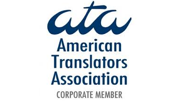January 28, 2013 by admin
Get a Free Quote
Our Accreditations





Recent Updates
Culture-bound syndromes and how language shapes illness
In her book Sleeping Beauties, neurologist Suzanne O’Sullivan explores the phenomenon of culture-bound illnesses around the world. The conditions she is interested in are psychosomatic disorders which arise due to a complex interaction between the mind and body, but… Read More
With 800 languages spoken, there is no question that New York is one of the most culturally diverse places on the planet. But it can also become a graveyard for languages facing extinction.
The Big Apple provides visitors with a thrilling journey through different linguistic universes, with signs in Korean, Chinese, Bengali, Gujarati and Nepali being just a few examples. The city has the highest linguistic density in the world, because it draws large numbers of immigrants in almost equal parts from all over the globe.
In such a richly multicultural environment, are endangered languages really a cause for concern?
UNESCO believes that up to half of the world’s 6,500 languages are critically endangered, and may pass out of use completely before the end of this century. ‘Critically endangered’ means that the youngest speakers of the language are grandparents or older, and they speak the language infrequently. Losing a language deprives a population of part of its cultural heritage and consequently part of its identity. The battle to save these languages is on, and for those that can’t be revived, the aim is to at least document them, so that linguists can continue to study them in the future.
When we think of endangered languages we tend to think immediately of remote mountain villages in far-flung countries. But languages can also die out in urban environments, and even in a diverse, multi-ethnic city like New York, where the five boroughs that make up the Big Apple are not only home to every major world language, but also to a whole host of languages that may be extinct in a matter of decades.
In response to a growing recognition of the opportunities that New York offers in the linguistic field, the Endangered Language Alliance was set up by two linguists and a performance poet. The Alliance is an urban initiative for endangered language research and conservation.
An example of a language that was uttered for the last time in New York is the dialect spoken by the Gottscheers, a community of Germanic people who had been living in an isolated linguistic community in Slovenia for hundreds of years. The last speakers ended up living in Queens, and there the language died out completely.
Another example is Garifuna, an Arawakan language from Honduras and Belize, also spoken by a diaspora in the United States. The Endangered Alliance have been working with two speakers of the language to document their language and culture by recording them singing traditional songs, before the language is lost without record.
The urban linguists have also used videos to create what may be the first digital records of someone speaking Mamiju, an Austonesian language from Indonesia.
But why do endangered languages become extinct?
Some languages may be wiped out when the communities that speak them succumb to wars, disease or natural disasters. More commonly, however, the population, either by choice or by force, transition out of one mother tongue into another. In a big city like New York, inhabitants tend to find that English is the only common language they have with their neighbours, and a lack of language classes and cultural events in their mother tongue means that gradually the younger generations simply lose the ability to speak (or write) in those languages.
Revival is possible, though, just look at the case of Yiddish.
At the end of the 19th century, the lower east side of Manhattan was a centre of European Jewish culture. However in the 20th century the Jewish community moved out into the suburbs and their American-born children ended up rarely speaking the language.
However, Yiddish bounced back, thanks to a combination of technology, faith and vision. Aaron Lansky, founder and president of the Yiddish Book Center, helped to salvage Yiddish language publications, of which 11,000 are now freely available online. And religious Jewish communities continued to use the language in everyday family life, meaning that the language was passed on to the next generation. Now there is even a Yiddish radio station. Speaking Yiddish is all part of understanding a broader view of Jewish identity, something which resonates with young people in the Jewish community.
The story of the revival of Yiddish provides hope for the future of other endangered languages. But those populations must have the will and vision to establish their own projects and centres, to ensure that these native tongues survive for many generations to come.
How to measure endangered languages
UNESCO’s classification system to measure endangered languages:
Source: UNESCO
Get a Free Quote
© 2024 All Rights Reserved
Rosetta Translation, 133 Whitechapel High St, London E1 7QA · 0207 248 2905
Comments
Add Comment